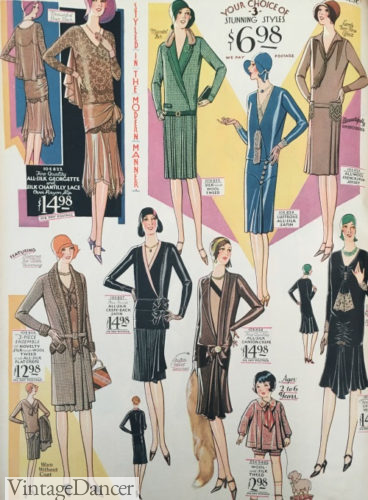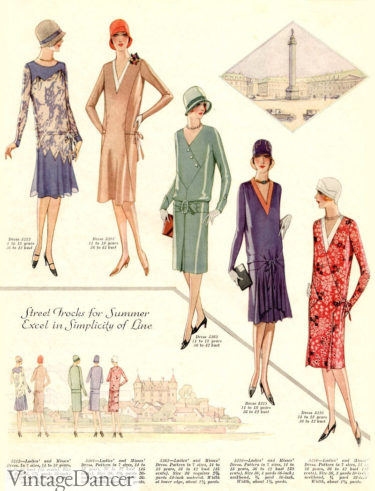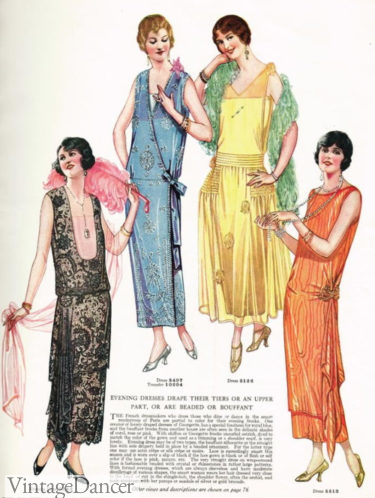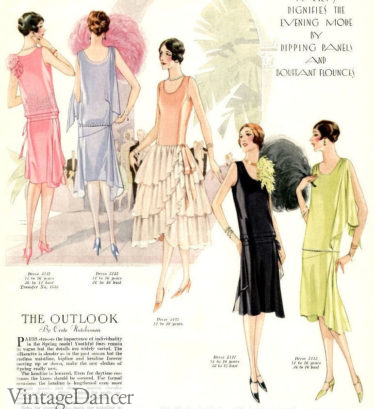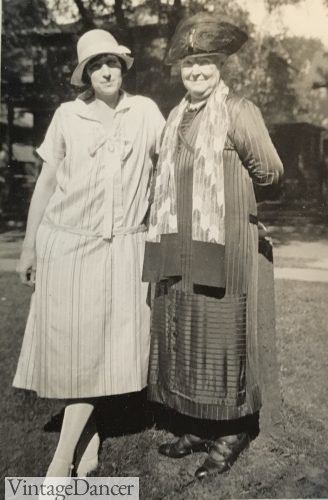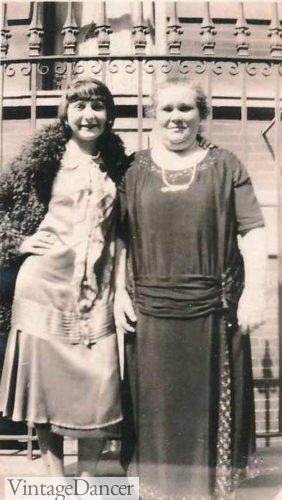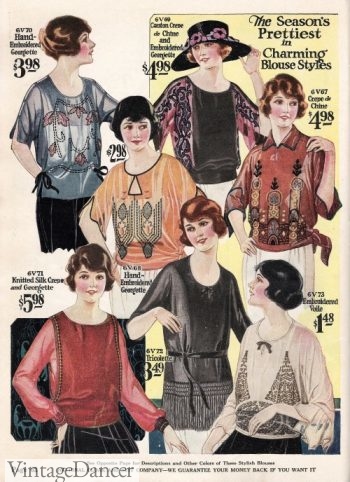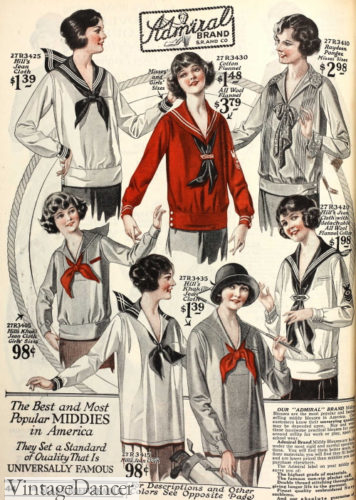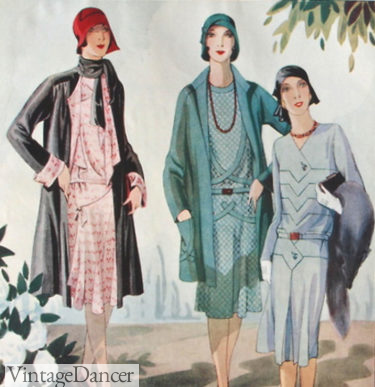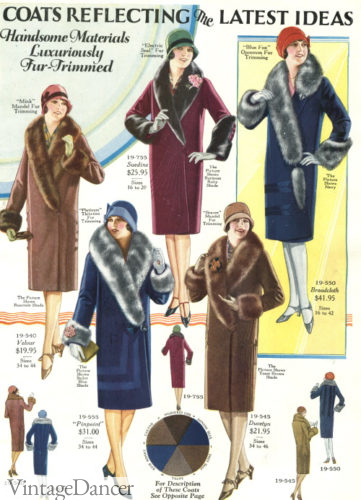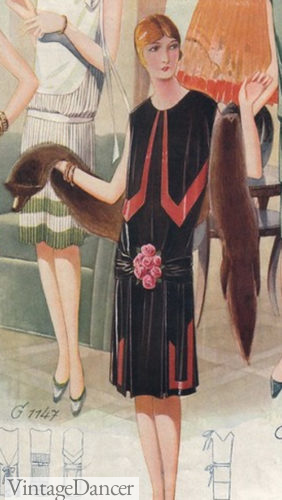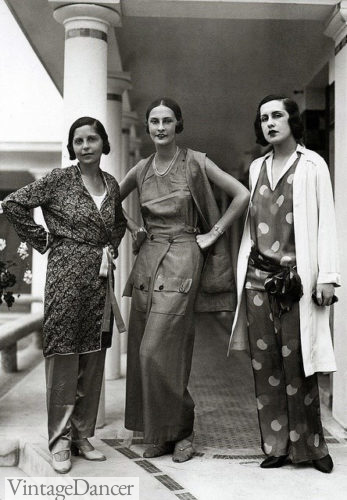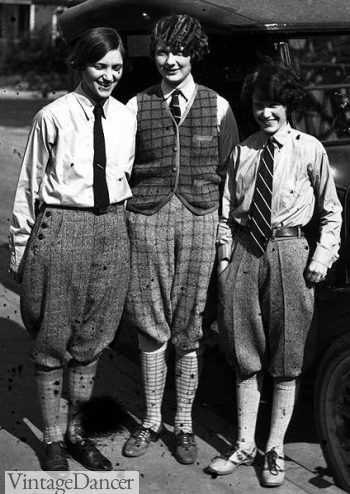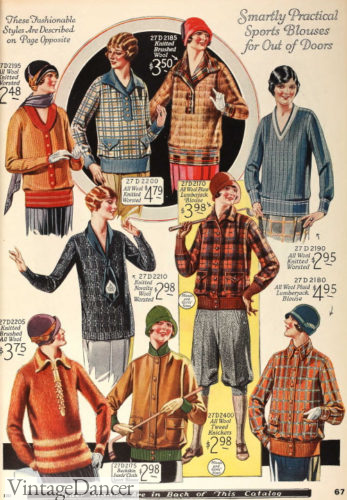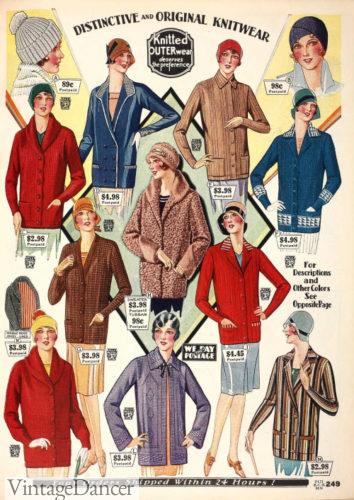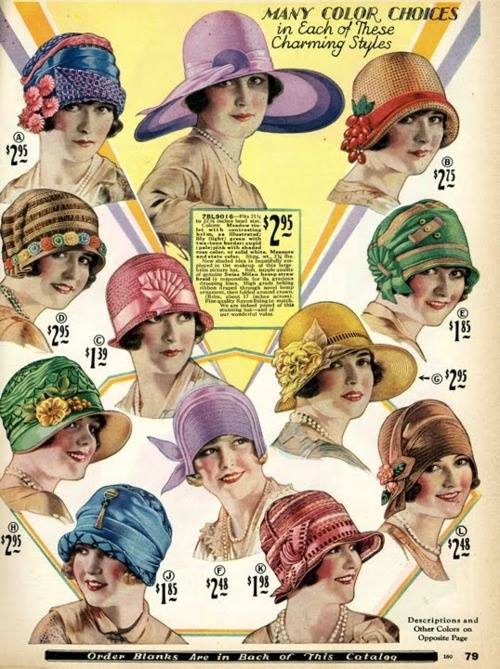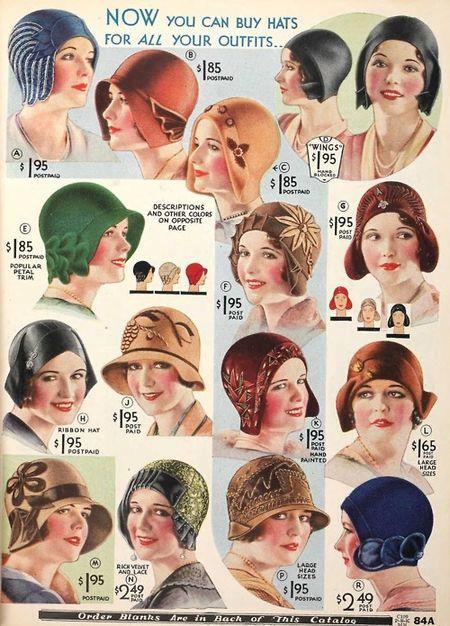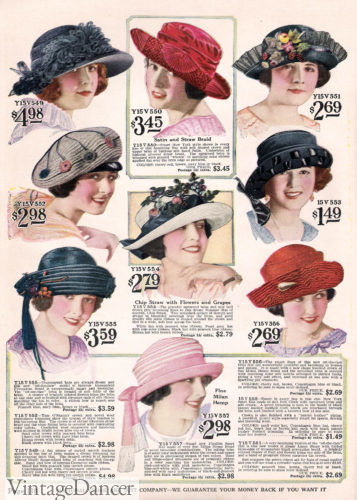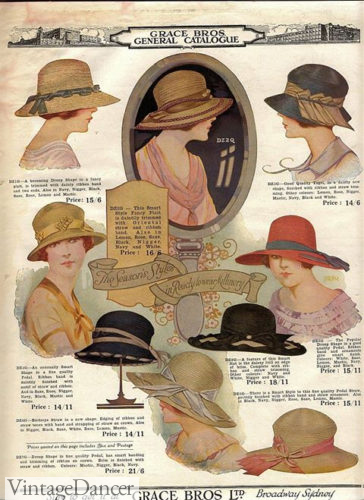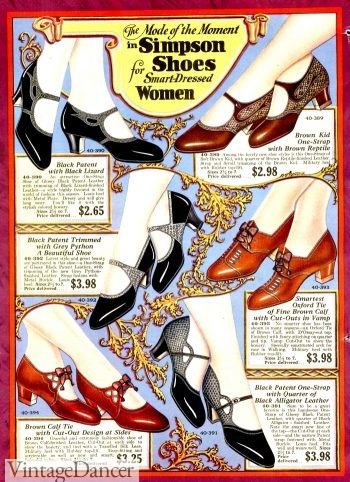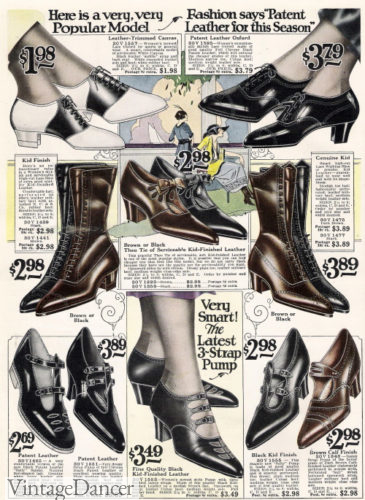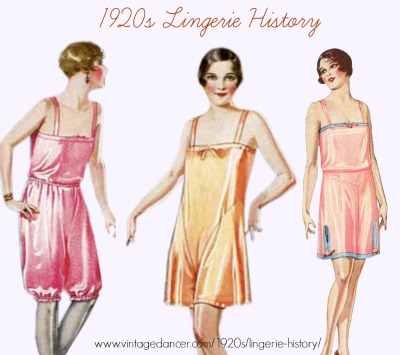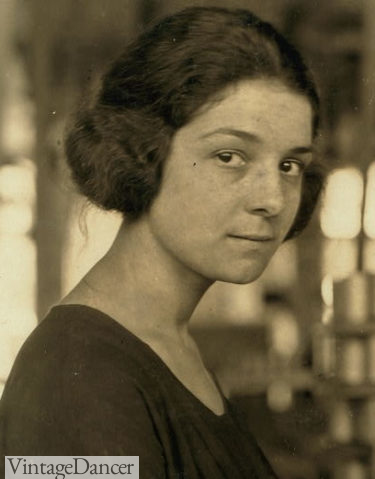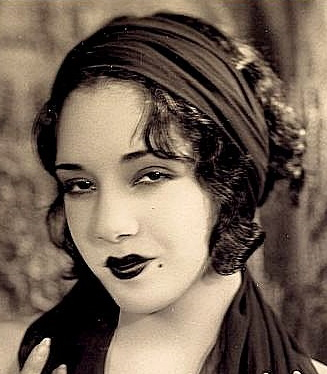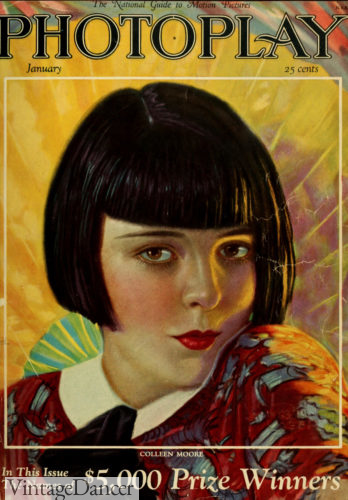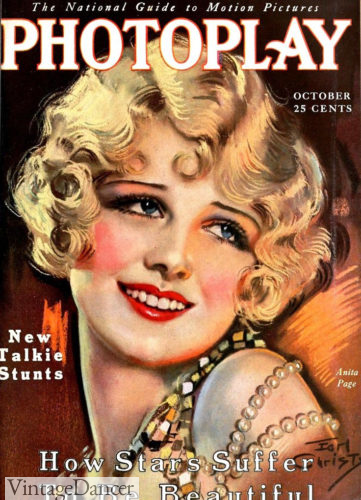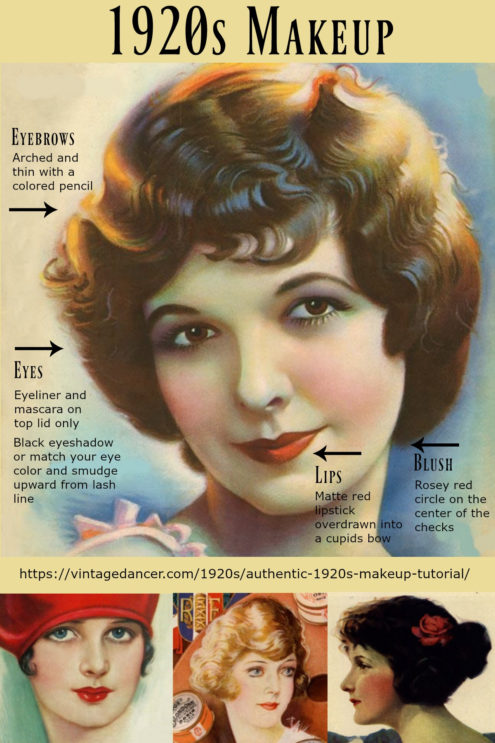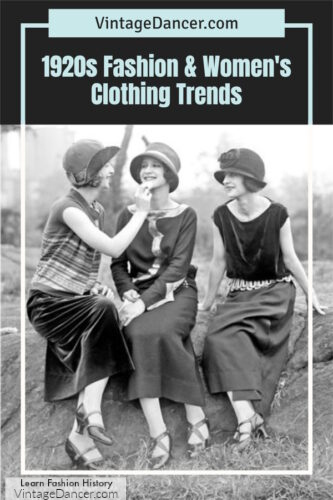
The Duncan Sisters wearing mid 1920s fashion
The Roaring Twenties were a golden era of fashion. WWI left women desiring a simple, comfortable lifestyle and a fashion style that reflected the new modern age, where young women outnumbered the older Edwardian generation. 1920s fashion was made for by the young and free spirited youth who discarded their corsets and showed off their jazz dancing legs.
Many historians say the ’20s flat chested look was inspired by young boys (La Garcone), yet if you look at 1910s girl’s clothing, you will see drop-waist dresses in the same styles that were made for women after 1922. 1920s women for all ages and sizes embraced these youthful girly looks and genderless identities that enabled them to live in a care-free manner, pursuing new hobbies and opening new doors for women’s rights.
1920s Fashion Trends
- Below knee length drop waist dresses with a loose, straight fit
- Beaded evening dresses inspired by “flappers”
- Mary Jane or T-strap heels
- Casual sport golf knickers, argyle socks, blouse and tie
- Cocoon fur coats and fringe shawls
- Cloche hats and short bobbed hairstyles
- Bead or feather headbands for evening wear
- Long pearl necklaces, tassel necklaces, drop earrings, Art Deco color faux gemstones
- Small beaded purses held pretty makeup compacts and cigarette cases
Strictly looking at fashion of the 1920s, the decade featured the above fashion trends. Some, of the trends (but not all) include what we have come to associate 1920s clothing with today. Absent are fishnet stockings, short fringe covered flapper dresses, and gangster outfits that emerged in the 1960s-does-1920s throwback. These make fun costumes for parties, but have little place in 1920s fashion history.
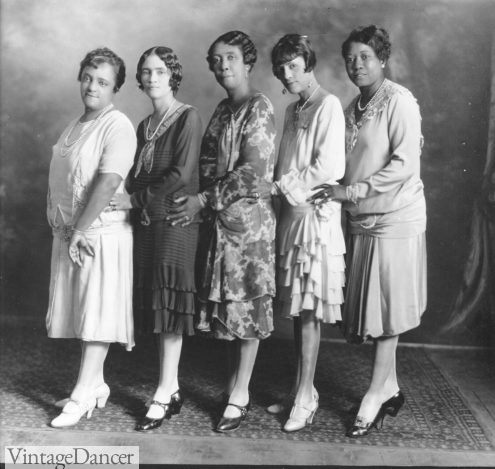
Late 20s dresses and shoes
Instead, this article will highlight 1920s women’s fashion that was worn by the typical middle to upper-classes in the USA, UK, and beyond. For additional detailed history, follow the links within to more 1920s fashion history articles. You can also sign up for the 1920s Style Guide series to receive articles in your email inbox over the next 3 months. There are also links and tips on where to buy 1920s inspired clothing so you can create your own authentic (or not) ‘2os outfit.
For 1920s men’s fashion, look here.
1920s Fashion Dresses
The first two years of the 1920s reflected the same fashion as the late Edwardian period with a natural waistline, full sleeves, and ankle length dresses. Fashions were easy to wear, pretty, and feminine.
After 1922, the waistline began to drop and the fullness slimmed down into tube-shaped sacks. Hemlines began to rise to mid-calf only to be dropped again in 1924, although most women ignored the longer length trend. Women wanted shorter and shorter dresses, gradually rising to just below the knee by 1925 and staying there until the 1930s.
Teenagers followed women’s 1920s trends, sometimes setting new trends with casual and sporty clothing.
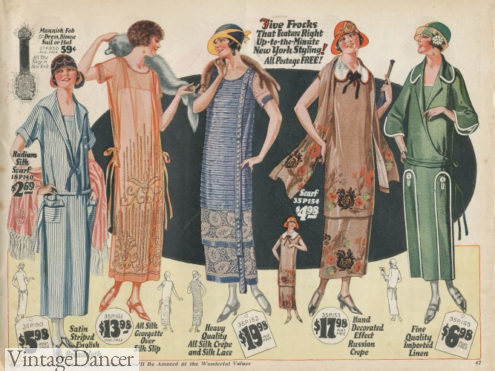
1924 tunic day dresses- notice the long lengths and shapeless fit
The tops of 1920s dresses remained modest, with wide open boat necks or V-necklines that allowed dresses to be slipped on overhead. Sleeves were usually long, at least elbow length, with sleeveless party dresses only acceptable in the evenings. The dropping waistline moved from the navel to the hip with wide sashes or thin belts to accent the placement. Vertical details such as dangling neckties, a row of buttons, vertical pleats, and thin collars emphasized a long and lean figure.
Not everyone was the idealized boyish shape, and these details helped elongate stout women.
At home, 1920s house dresses were made up in cheerful small cotton prints, gingham checks, plaid, and vertical stripes trimmed in white piping, rick rack, and ruffles. Oversized white round, shawl, or pointed collars earmarked these dresses as suitable for homewear or domestic service uniforms. The addition of large patch pockets made them practical for household chores as well as wearing a full apron in the elongated style.
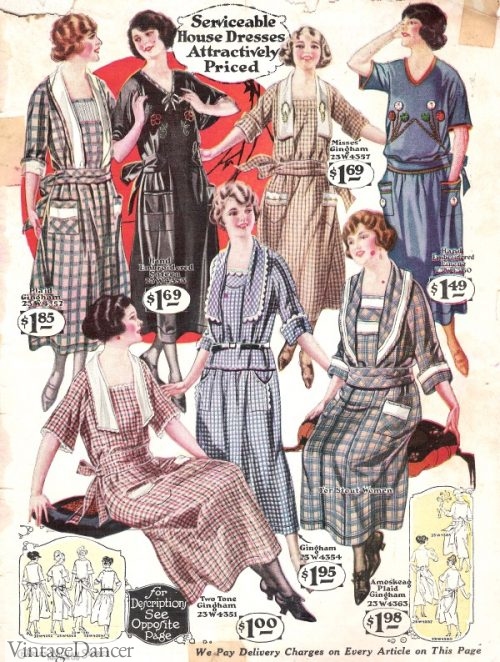
1923 cotton house dresses in plaids and checks
Leaving the house required women to change clothes into something more appropriate for their destination. Running errands, working in an office or department store, or visiting friends in the afternoons put women into a solid color dress with a matching light jacket or a wool two-piece traveling suit. For church, women dressed in the best outfit she owned, complete with coordinated gloves, hat, and bag.
Necklines were a modest boat, scoop, or V-neck with many sporting round Peter Pan, shawl, or V neck collars. Long sleeves such as the bishop or bell sleeves added variety at the wrist. Patterned dresses were also chosen in floral, abstract, or Art Deco themes, especially in spring and summer colors.
- 1929 day dresses
- 1928 day dresses
If a woman were going to a tea at a restaurant or a garden party, her dress may have been made of richer fabrics such as silk, satin, organdy, or chiffon. All white or floral dresses were common for summer tea parties as well as short caps or sleeveless tops.
1920s Afternoon dresses also featured tired skirts, wraps to one side, and hanky hems by the end of the decade. Large flower corsages decorated one shoulder in 1926, while embroidered appliques accented many waistlines. See the many ways to decorate a plain ’20s dress.
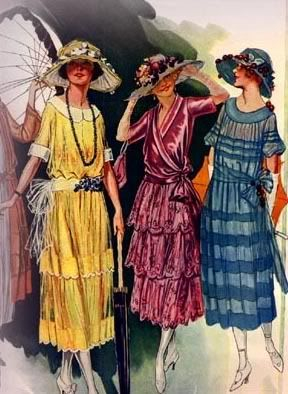
1921 afternoon dresses
In the spring, women’s 1920s fashion favored pastel colors and jewel tones for the fall/winter. Gas blue, a medium blue, was the newest color in style in the early ’20s, while the earthy ’70s palette of orange, green, and tan were seen in the later years.
Fabrics were usually light and airy, with just enough weight to drape in straight lines. Gold and silver were reserved for evenings, and even black was sometimes worn when heavily decorated in beads and sequins. Sheer dresses were worn over a matching long slip. Learn more about f1920s fabrics and fashion colors.
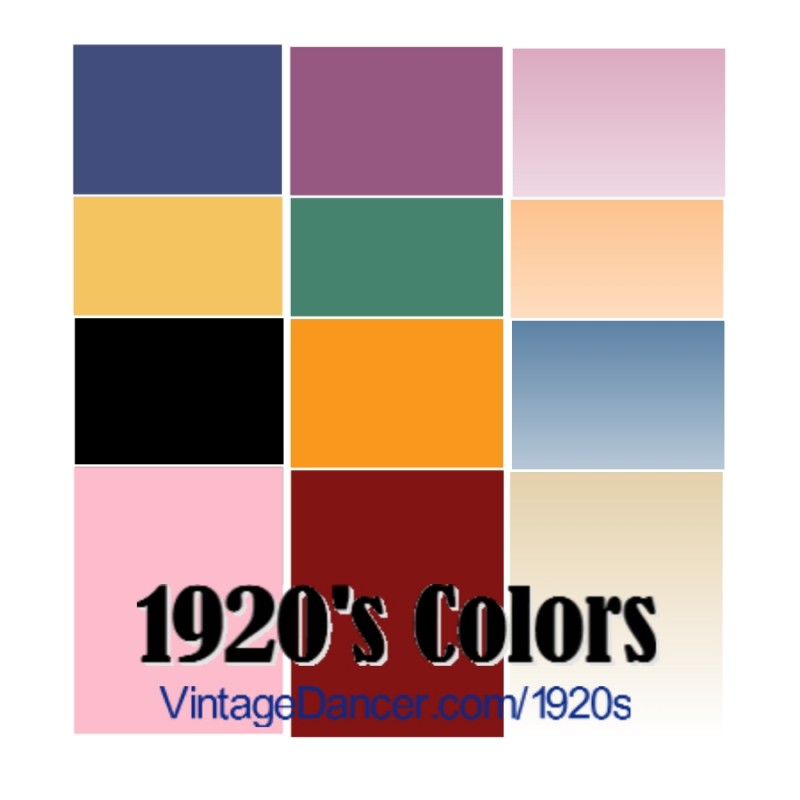
Common Clothing Colors of the 1920s
Evening events had women dressed in fine fabrics, with or without sleeves, and more dramatic decoration. The all-fringe covered flapper dress didn’t exist, although fringe was used as an accent on hemlines and evening shawls. Metal sequins were very expensive and used sparingly. Beading and embroidery with metallic thread were the preferred decorations on most women’s eveningwear, although it was quite normal to have none of it.
Beaded glitzy dresses became associated with misbehaving “flappers,” who were young women always on the lookout for a good time. This meant frequenting night clubs, jazz halls, and illegal speakeasies. In reality, many fashion designers made beaded, sequin, and fringe trimmed dresses for their elite clients who could afford the extravagant cost.

Beaded dress
Instead, 1920s formal dresses had architectural details in the form of Grecian inspired draping, fancy hemlines, or were made of richer fabrics — silks and sheers in summer, and velvet in winter. Lace made a brief revival in the mid 1920s but was usually considered to “old” for youth-driven fashion. Both long and short evening gowns graced the dance floor. Learn more about 1920s evening gowns here and here.
- 1924 long evening gowns in the draped effect
- 1928 slip style evening dresses
1920s Fashion for mature women differed slightly than for young women. Many traditional ladies dressed in the same styles as the 1910s, or they chose the most modest designs with longer hemlines and full sleeves. Poor women, too, did not follow the latest styles. Their clothing was either purchased secondhand and a few years out of style, or handmade without much trim and only in cheap fabrics.
The simplicity of the clothing designs made them very affordable to sew from home, without a pattern, or using patterns illustrated in ladies’ home magazines. Shop 1290s sewing patterns.
- The Daughter Wears a 1920s Casual Dress while Mother Wears Modest Clothing of Late 1910s
- The Mother Wears a Natural Waist Dress while the Daughter is in a New Drop Waist Dress
Separates- Skirts, Tops, Jackets, Coats
While dresses were the predominate fashion item for women, mixing and matching separates was growing in popularity — pleated skirts paired with collared blouses and a light matching jacket for spring and summer. The early ’20s saw heavily embroidered sheer blouses with folk art embroidered designs. These were worn with long, straight skirts that touched at the ankles.
The tunic top with thin belt tie was another common design, as was the sporty sailor inspired Middy blouse. Collared and button-down shirt-blouses dominated the late 1920s. They were always worn hanging over the skirts, never tucked under. Learn more about blouses and skirts.
- 1922 Embroidered Blouses
- 1924 Middy blouses
Outer coats were heavier wool coats that were the same length as dresses with the overall shape of a caterpillar’s cocoon. Fun plaids, checks, and pastel color spring coats mimicked the color palette of clothing underneath or coordinated with a hat. Lighter jackets mentioned above were sold with dresses or skirts. They were collarless, trimmed in embroidery and hip length. The armless cape coat was also popular in the later ’20s.
Learn about 1920s coats, jackets.
- 1928 spring coats with dresses
- 1928 fur collar winter coats
Many winter coats were trimmed in removable fur shawl collars that buttoned at the side waist. Fur stoles, wraps, and shawls added richness and warmth for both day and evening outfits. All-fur coats were an option for the rich, with cheaper furs dyed to look like luxury furs being options for the middle classes.
A large fringe-trimmed scarf coat or shoulder cape was an elegant coverup for evenings, as were rich velvet opera coats. Learn about 1920s wraps (fur, fringe and shawls).
- Fox fur stole (pieced to make it long)
- 1925 fringe shawl
Sportswear / Casual Fashion
What about pants? Did women wear pants or shorts in the 1920s? The 1920s was the first decade to fully embrace women in men’s inspired sport clothes. “Sport” is what they called casual back then. These were clothes worn by young “new women” who had interests in playing sports, enjoying outdoor activities, and in some cases working in them (Hollywood movie sets). Long pants were uncommon until the Asian inspired lounge pajama or beach pajama made wearing them at home or on vacation acceptable in 1929. Read about pants and knickers here.
- 1929 silky beach pajamas
- 1920s women’s sport clothes- knicker pants, tall socks, mens shirts and ties
The sport outfit consisted of knee-length wool knicker pants, tall socks, and a collared blouse or middy top with a necktie. Knit pullover sweaters, cardigan sweaters, and vests were also worn over blouses. They came in jewel tone solids, wide stripes, and detailed prints such as Fair Isle, geometric checks, and windowpane. They were long, down to lower the hip, with matching belt ties in the early years and contrasting cuffs and collars in the later years.
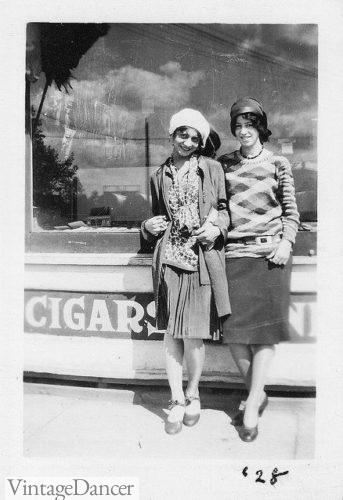
1928 teen in knit tops and skirt sets
Casual knit jackets, striped blazers, and plaid jackets (lumberjack blouses) looked similar, but with buttons all along the front. These same sweaters and jackets were worn with knit skirts and dresses for a slightly more formal look than with knickers. Read about sweaters here. Also, have a look at these 1920s casual outfit ideas.
- 1925 knit sweaters, jackets, lumberjacket blouses
- 1929 knit tops and sweaters, blazer jackets
At the beach, women wore the new style of swimsuit, which was now well above the knee with a fitted long tank top over attached shorts. Black, red, blue, green, and orange wool swimsuits with colored horizontal stripes or white trim on the edges became saggy in the water. To keep swimwear modest, women wore long, knee high black stockings and canvas beach shoes or rubber slippers. Learn about 1920s swimwear.
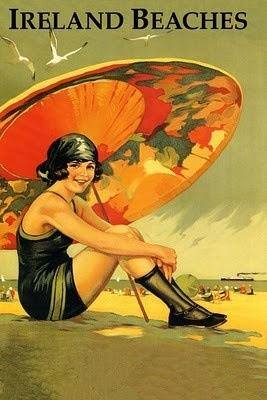
Swimsuit, parasol, stockings and beach shoes
1920s Hats and Hair Accessories
After the primary clothing was chosen, women would select a hat or hair accessory to complement her outfit. This was not an era that needed all accessories to match, although a hat looked dressier when coordinated with one color in the dress or another accessory, such as gloves.
The most famous hat of the 1920s was the helmet shaped cloche hat. Its tight fit around the skull and low brim required women to lift their chin up to see where they were walking. Cloche hats were minimally decorated with simple ribbon shapes and abstract flowers placed flat to one side, or they were simply embellished with a pretty brooch pin. Embroidery and applique were other decorating technique women could apply at home, repurposing trim from older hats to save a few dollars. Folds and creases also created architectural delights while the occasional tall single feather added height for petite women.
- 1928 hats for spring
- 1928 summer cloche hats
Non-cloche hats were also common, especially in the early years when the straw picture hat had a rolled brim, wide side brims, or a flat sailor hat shape. The 2-3 point musketeer hat featured a flat forehead brim with pretty embroidery decoration and an ostrich plume feather draping off one side. Casual hats were the knit beret, tam o’ shanter, or swathed turban.
- 1922 spring bucket hats
- 1923 summer straw hats
The velvet or gold lamé turban was the only hat that could be worn with evening gowns. The look was inspired by ancient Egyptian queens who became a major 1920s fashion trend after King Tut’s Tomb was discovered in 1922. Egyptomania influenced hats, evening gowns, and jewelry during the entire decade. Learn more about 1920s hat styles.
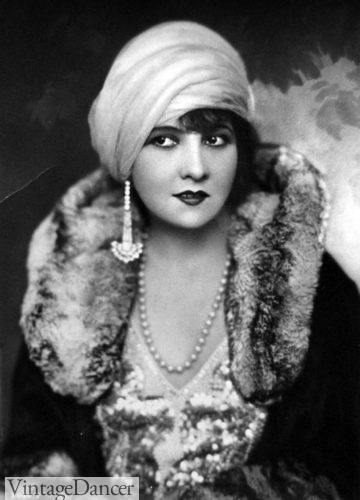
Lucy Doraine, Hungarian actress, wears a turban headwrap
Hair accessories were alternatives to hats for both day and evening looks. The headscarf was an especially popular hair accessory that could be casual or formal. Silk scarves were also worn loosely around the neck, creating a classy and sophisticated outfit.
Other hair accessories reserved for the evenings included headbands encrusted with beads, crystals, or a feather. The all-over beaded Juliet cap (skull cap) was inspired by Egyptian headdresses as well. Draping long beads or pearls around the bobbed hairstyle was another simple form of hair decoration, as was adding a crystal hair comb to one side or a tortoiseshell hair comb in the back of a chignon bun.
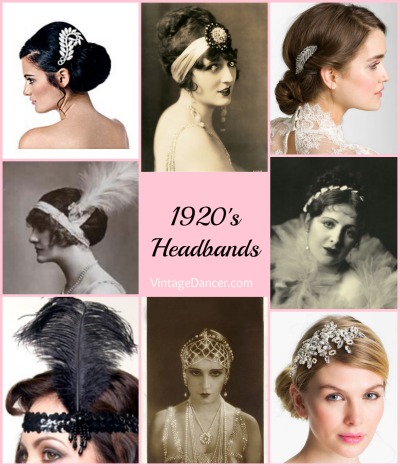
Various styles of 1920s headbands and hair clips
Ladies’ 1920s Shoes
Previously, women wore lace-up boots at all hours of the day. In the 1920s, that all changed as the casual Oxford shoe and strappy heels exposed feet like never before. Lace up Oxfords were practical and sturdy with a low heel. Dressy heels featured several straps or a single strap (Mary Jane) across the vamp. The colonial pump lacked straps but featured a decorated buckle or wide buckle over the tongue.
In the late 1920s, the T-strap became the new fashionable heel. Most Oxfords and heels were brown or black, which coordinated with every outfit. In summer, white heels were worn with white tea dresses.
- 1928 Catalog – Oxfords and low heel Mary Jane Walking Shoes
- 1922 heels, oxfords, boots and sandals
Evening shoes were often dyed to match dresses or had painted heels and straps in gold or silver and were bedazzled with rhinestones and gold buckles. Heel heights rose to at most 3 inches, although illustrations made them appear taller. Learn more about 1920s shoe styles.
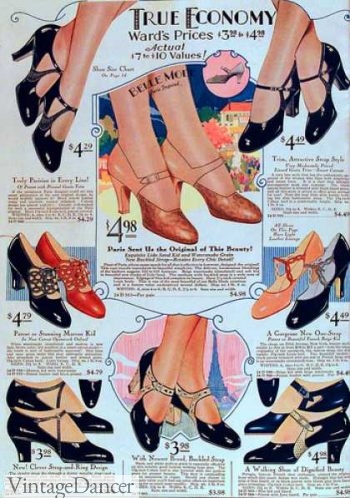
1929 evening heels
Casual shoes in summer were made of white canvas and sometimes trimmed in black or brown leather for a two-tone style. Heels were very low but never flat. Tall boots were worn for hiking and workwear while rubber boots and galoshes protected dress shoes from rain and snow. Learn more about boots.
1920s Fashion Accessories
Gloves. Most women wore gloves when leaving the house, only removing them for eating, smoking, or using the restroom. There was a strong fear of germs which leather, suede, or silk gloves provided protection from. 1920s gloves were usually mid-arm length for daytime and over the elbow for evenings. Daytime gloves may have been cuffed in fur or decorative trim. They came in black, grey, brown, or ivory with pearl buttons at the wrist. Learn more about gloves.
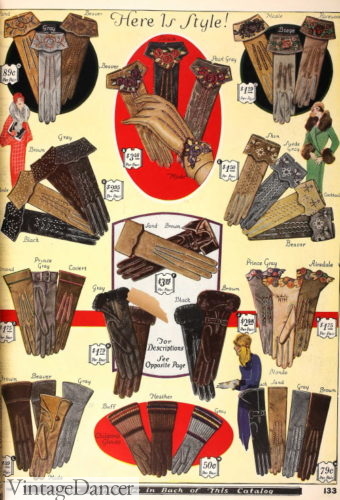
1926 gloves
Jewelry. Gone were the days of showing off wealth through layers of expensive jewelry. Minimalism was preferred in the 1920s with a long bead, pearl, or tasseled necklace worn in the late afternoon or evenings. Since short haircuts exposed ears, long clip-on drop earrings gave women a place to show off some bling. Wrist cuff bangles and bracelets were a place to wear jewelry during the daytime. A brooch pin on the shoulder, belt, or sash was another fashionable placement for the latest in Art Deco jewelry.
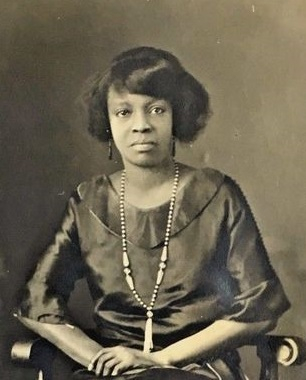
Wearing a tasseled long bead necklace and drop earrings
Black, red, blue, coral, and jade green gems set in gold made bold color statements. Fake jewelry looked just like real stones, making every woman equal in her accessories. To wear jewelry or not was a personal choice. Plenty of women saved jewelry for only special occasions, or only wore one piece with each daytime outfit. Learn more about 1920s jewelry styles.
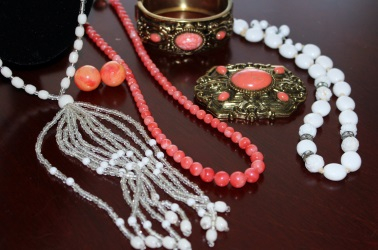
Vintage 1920s jewelry
Wristwatches were practical but highly decorated pieces of jewelry. Watch faces came in square or rectangle Art Deco designs covered in filigree. They were thin and dainty, much like a tennis bracelet in platinum, white gold, or sterling silver.
Handbags. During the day, women had little need to carry a handbag, but when they did, it was often a small leather tooled bag with a clasp frame and a short strap for a handle. Pouchette bags were flat rectangular bags that were carried in hand or tucked under the arm. Reticule bags were made of a circle of cloth gathered with a drawstring strap. These were popular to sew, embroider, or needlepoint at home.
For evenings and fancy afternoons, a beaded or metal mesh bag was the ultimate in luxury. Beaded bags came in either the round reticule or rectangular frame bag. They could be covered in modern Art Deco bead patterns or dripping in bead tassels. Both colored glass beads and silver cut steel beads were used. Metal mesh bags or metal ring bags made of silver or plated bronze or gold were made by Whiting And Davis, who still makes them today. Learn more about purses and bags.
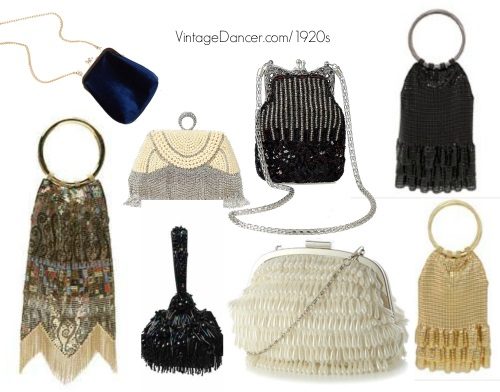
1920s style evening bags
Makeup compacts, flasks, and cigarette cases. Handbags were small, only large enough to carry a few coins, a handkerchief, house keys, and makeup. Makeup compacts of face powder, mirror, and lipstick were essential for most women. Some compacts were built into handbags, while others were small but heavily decorated single cases. For women who smoked, a flat cigarette case held a few cigarettes. A long stem cigarette holder made of amber, ivory or bakelite made smoking look elegant in addition to keeping hands clean.
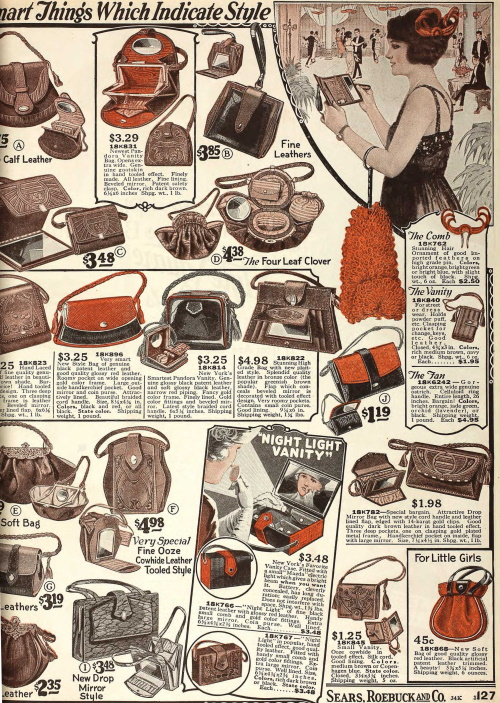
1922 small purse with compartments for makeup
Some naughty women secured a small metal flask to their stocking band, tucked it into boots, or hid them in a purse. Prohibition was in full effect in 1920, and drinking could get a person arrested. Shop accessories.
Glasses / Sunglasses. Only those that needed eyeglasses wore them. Simple round frames made of tortoiseshell or metal were the only option for women and men. Sunglasses were just coming into fashion as more people took to the beaches for a suntan. Brown tinted lenses in round shell frames or gold metal frames were worn by Hollywood movie stars. Learn more about 1920s eyeglasses and sunglasses.
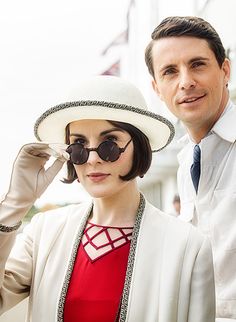
1920s round sunglasses in Downton Abbey
Parasol, Fan, Boa. Accessories that were purely ornamental included the paper parasol, popular at beaches and resorts and walks in the park. The lace, wood, or paper fan was another practical accessory which became impractical when made of long Ostrich feathers that matched the feathers of an evening feather boa. Shop accessories.
Read more about these 1920s accessories here.
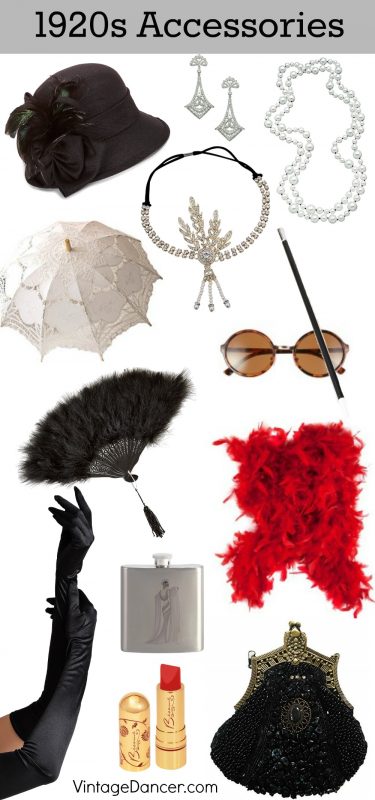
1920s accessories- Shop here.
Lingerie – Stockings and Underwear
Underneath a lady’s fine clothes were very pretty yet simple stockings and underwear. Stockings came in black, tan, white, grey, or pastel colors that attached to garters or were rolled down with an elastic band. They had small seams up the back and reinforced Cuban heels. Some fancier versions also featured embroidery above the ankles. Stockings were thick for daywear and a bit more sheer for evenings. Tall socks could be worn instead of stockings with casual outfits. The fishnet tight was a later invention and not worn in the 1920s. Learn more about stockings.
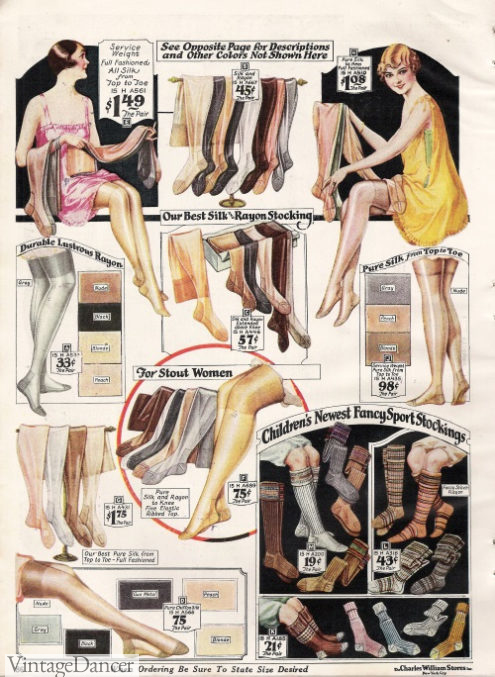
1927 colored stockings and socks
To create the flat-chested tube shape, women turned to bandeau bras, corsets, and slips. The minimal bandeau bra was a flat piece of fabric with straps that kept small chested women supported but minimized. Heavier chested women or stout women needed the support or a rectangular corset or corselette with built-in bra top that minimized the chest and smoothed out bumps and rolls around the torso. The corset extended down the hip to create a vertical tube shape.
Panties were not invented yet. Instead, women’s underwear were knee-length bloomers. These often attached to a cami top or bralette to create a Step-In model that resembles a romper. Lingerie was made in rose pink, peach, powder blue, sage green, and violet colors. White and back were less common unless in winter weight cotton long johns.
A light slip with a square neckline was worn over corsets and underwear to help dresses and separates hang off the body. Clingy dresses with visible corset or girdle lines was a sign a ladies’ clothes were too small.
Learn more about lingerie, nightgowns and pajamas.
1920s Beauty: Hairstyles & Makeup
A woman’s long hair, what had been for centuries her pride and joy, was now meeting cutting shears for the first time. The new look was the bob cut. Short, ear length curly hair in the early years gave way to smooth finger waved styles by 1930.
Women who kept their long hair styled it in a way that mimicked short hairstyles. Buns on either side created an earphone look. A single bun at the back, a chignon, first pulled hair out around the ears to frame the face.
The shingle was a very short hairstyle for thin straight hair that had a V point at the neck and spit curls around the face. The Eton crop was the shortest style that looked like a men’s haircut, with hair slicked back or parted on top.
Most ’20s hairstyles were styled to be short and close to the head so a cloche hat could fit snugly over it. Women without natural curl turned to marcel waving, water waving, and wave clips to achieve the desired 1920s hairstyle. Most women became frequent visitors to men’s barbers and the new women’s salons that exploded during this decade.
Learn more about 1920s hairstyles for long and short hair.
- 1924 faux bobbed long hair
- Lupe Velez, curly hair with headwrap
- 1926 straight bobbed hair
- Anita Page- 1929 marcel waved hair
In the media, makeup was still being talked about as a bad thing, yet the majority of young and middle-aged women were wearing at least face powder on a daily basis. Face lotions, potions and skin treatments were being marketed to correct skin imperfections, while makeup was seen as a tool to accent natural beauty — not cover up problems.
Face powder to match or darken skin slightly was applied all over. Next came a pink blush to create full rosy cheeks. A matte red lipstick was about the only choice for every woman’s lips. Bright red for daytime and deep red for nighttime.
Cake mascara was used to line the upper eyelid and darken light lashes. It could be blended up onto the eyelid, however this was a trick used on the silver screen to make black and white images more defined. In real life, heavy eye color was too much makeup. A light dusting of green, blue, or brown eyeshadow became more common when movies and photos were released in color. Learn about the history of make up and how to apply 1920s makeup.
1920s Outfit ideas
Flapper Dress – How to create an authentic flapper costume
Non- Flapper outfit ideas – 1920s outfits with skirts, pants, and casual clothes. Did Women Wear Pants in the 1920s? Yes!
DIY 10 easy 1920s outfits – From day to night, casual to formal outfits
10 more 1920s outfits inspired by 1920s Downton Abbey outfits
1920s Outfit Inspiration- Women 20s Costume Ideas
Trendy 1920s Dresses. How to spot a 1920s style dress or outfit in shops today.
How to make a 1920s day / house dress and girls toddler dress
Upcycle a thrift store dress into a 1920s dress
1920s sewing patterns – Sew your own outfit. The One Hour Dress pattern is a simple one to start with.
Petite dresses– What brands are best for petite women
1920s costumes– Halloween and fancy dress costumes under $100
International shoppers in the UK shop here and AU/NZ shop here.
Debbie Sessions has been teaching fashion history and helping people dress for vintage themed events since 2009. She has turned a hobby into VintageDancer.com with hundreds of well researched articles and hand picked links to vintage inspired clothing online. She aims to make dressing accurately (or not) an affordable option for all. Oh, and she dances too.
